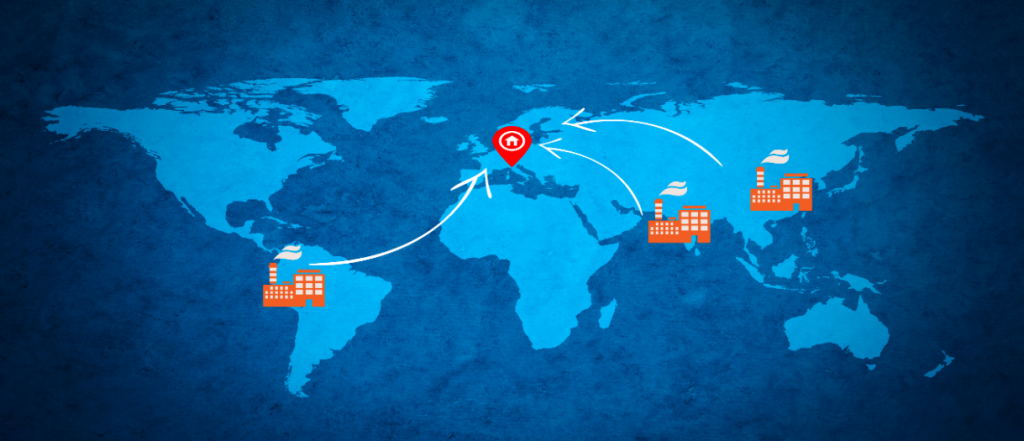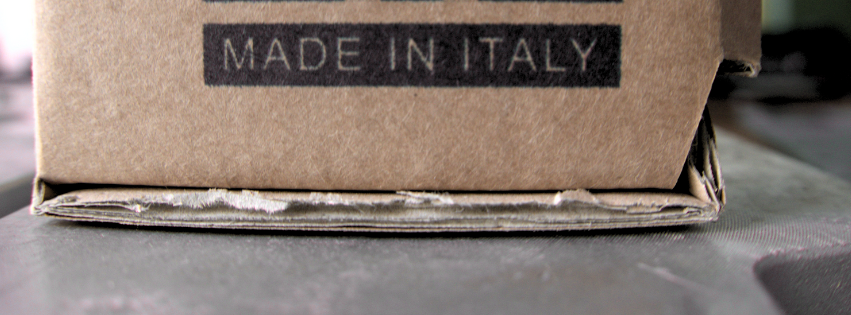
In recent years, the relocation of production activities, also known as off-shoring, has been at the center of a heated debate, which has focused on the limits and criticalities of such strategies. This debate has become even more topical in the wake of the pandemic and recent conflicts, prompting entrepreneurs to question the opportunity to reconfigure the production system. Reshoring has been of the paths taken. But what do off-shoring and reshoring really mean, and which technologies can enable the new production models?
What is off-shoring?

Off-shoring refers to the allocation of production centres in geographically remote areas of the world. This practice first started in the last two decades of the last century. It began after the fragmentation of production into separate stages and with the development of an efficient infrastructure network, that made it possible to relocate production facilities.
Labor-intensive stages of the production cycle started being located in areas where labor was cheaper and readily available. This practice has been widely used ever since by companies, to create and maintain a more competitive positions on the international scenario.
The offshoring crisis
The reasons that in past decades had led to off-shoring choices are now being challenged by radical changes in the economic environment of the destination countries and by a new awareness of the limits of a global supply chain.
Among the critical issues, there is the gradual increase in labor costs in the countries targeted for off-shoring.
To this labor-related cost, huge logistics costs and hidden costs need to be added, such as those due to miscommunications or production quality problems.
Other issues that have emerged, of a non-economic nature, are those related to the environmental impact of international shipping.
Billions of tons of cargo are transported each year by trucks, planes, ships and trains around the world, and freight transport is responsible for 8 percent of global greenhouse gas emissions [1]. This is due to the fossil fuel used by almost all cargo transport vehicles.
Additional problems include the lack of responsiveness and transparency of production, as well as health and geopolitical issues.
What is reshoring and why is it being talked about?
The risks and disadvantages associated with off-shoring has prompted entrepreneurs to “backtrack” and seek new strategies to stay competitive.
As a result, companies started talking about reshoring, a term used to suggest the will of companies to reshore production in home countries.
The main reasons can be summarized in four macro-categories: cost; perceived customer value; facilitation of innovation processes; and government incentives.
As for the second group of motivations, customers have sometimes shown a hostile attitude towards foreign-made products and a favourable attitude toward the so-called “made in” products. We may refer to this as the “made-in effect”, to describe the customers’ predilection towards items produced in their country of origin.

Conditions for the reshoring of production activities.
There is a widespread belief that reshoring requires an evolution in production technologies and that only a radical transformation in production methods can result in effective and long-term back reshoring.
In fact, the development of Industry 4.0 has been identified as the driving force behind the new phenomenon. By enabling the modernization of production processes, it definitely has a positive impact in terms of reshoring.
What role can additive manufacturing play in enabling the reshoring phenomenon?
Additive manufacturing technologies can facilitate the adoption and implementation of manufacturing reshoring strategies. But how?
An answer to this question may arise from a comparison of the benefits achievable through the adoption of additive processes and the motivations supporting reshoring [2].
Let’s first discuss the aspect of costs related to additive manufacturing. In relation to labor costs, the high level of automation and digitization of additive technologies and the lower reliance on the labor factor can undoubtedly lead to a decrease in these costs. This can discourage companies from relocating to countries where labor is low-cost.
Still speaking of costs, thanks to additive manufacturing, production costs can be cut by reducing, or even eliminating, the assembly stage. 3D printing can in fact offer finished parts which don’t necessarily need to be assembled, and this results in a reduction in the amount of work and suppliers needed.
On the other hand, as for hidden costs, – such as those resulting from slow communication between business operators and the lack of responsiveness- they can be greatly reduced through technologies characterized by a high level of digitization, such as additive manufacturing.
But the benefits are not only economic. Key aspects are the savings in terms of lead times and the benefits in terms of product quality of additive manufacturing.
About the desire to increase the value of one’s products in the eyes of customers, additive manufacturing can play an important role in the process of ennobling them, especially when combined with appropriate post-processing.
In fact, additive manufacturing provides high levels of customization and can easily realize very complex geometries otherwise not feasible.
In summary, the comparison between the motivations for reshoring and the benefits offered by the adoption of additive manufacturing technologies, show a high level of overlap between them. This is why we believe that additive manufacturing may actually be an enabling factor for reshoring, as it provides valuable answers to real needs: cost cutting, product customization, quality and speed of delivery.
[1] https://climate.mit.edu/explainers/freight-transportation